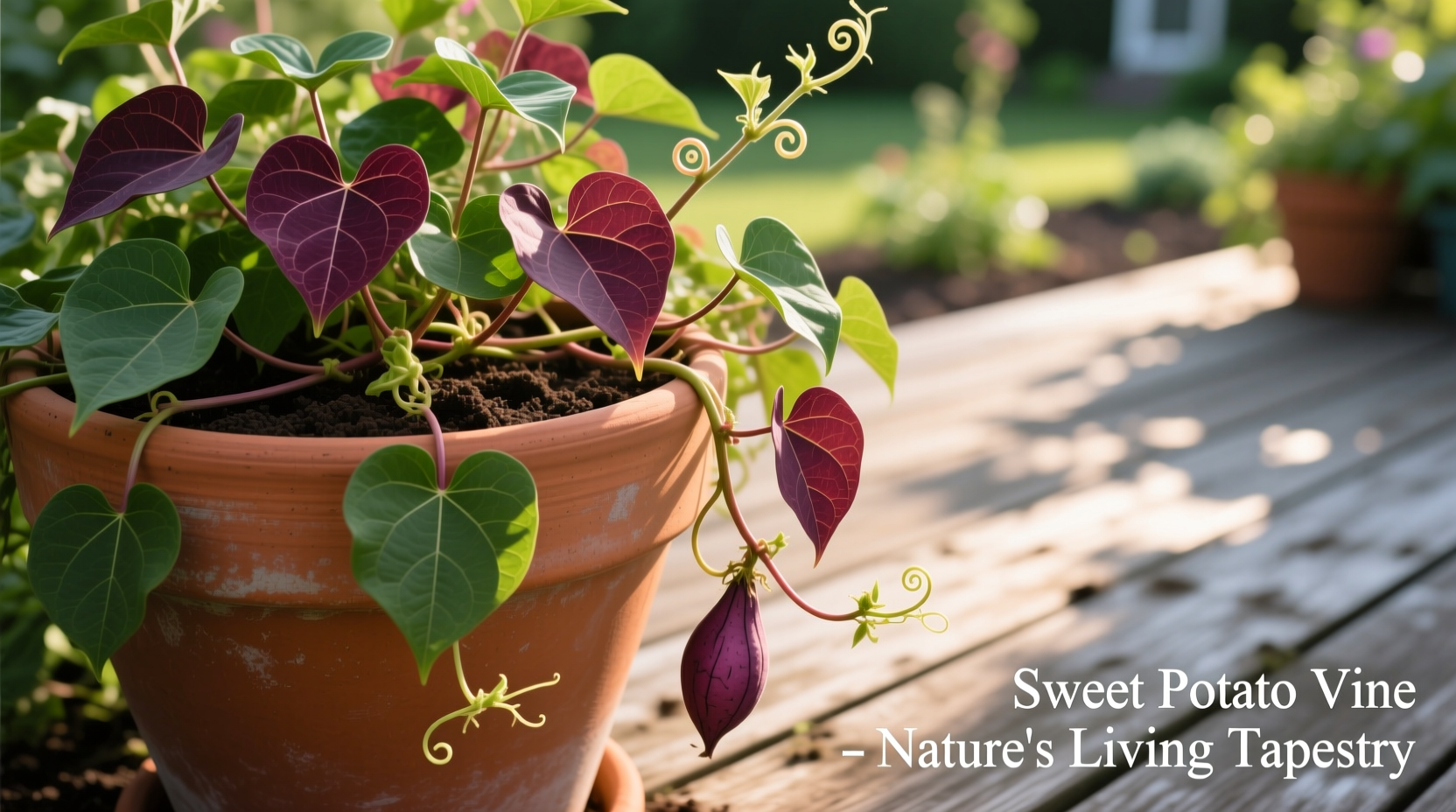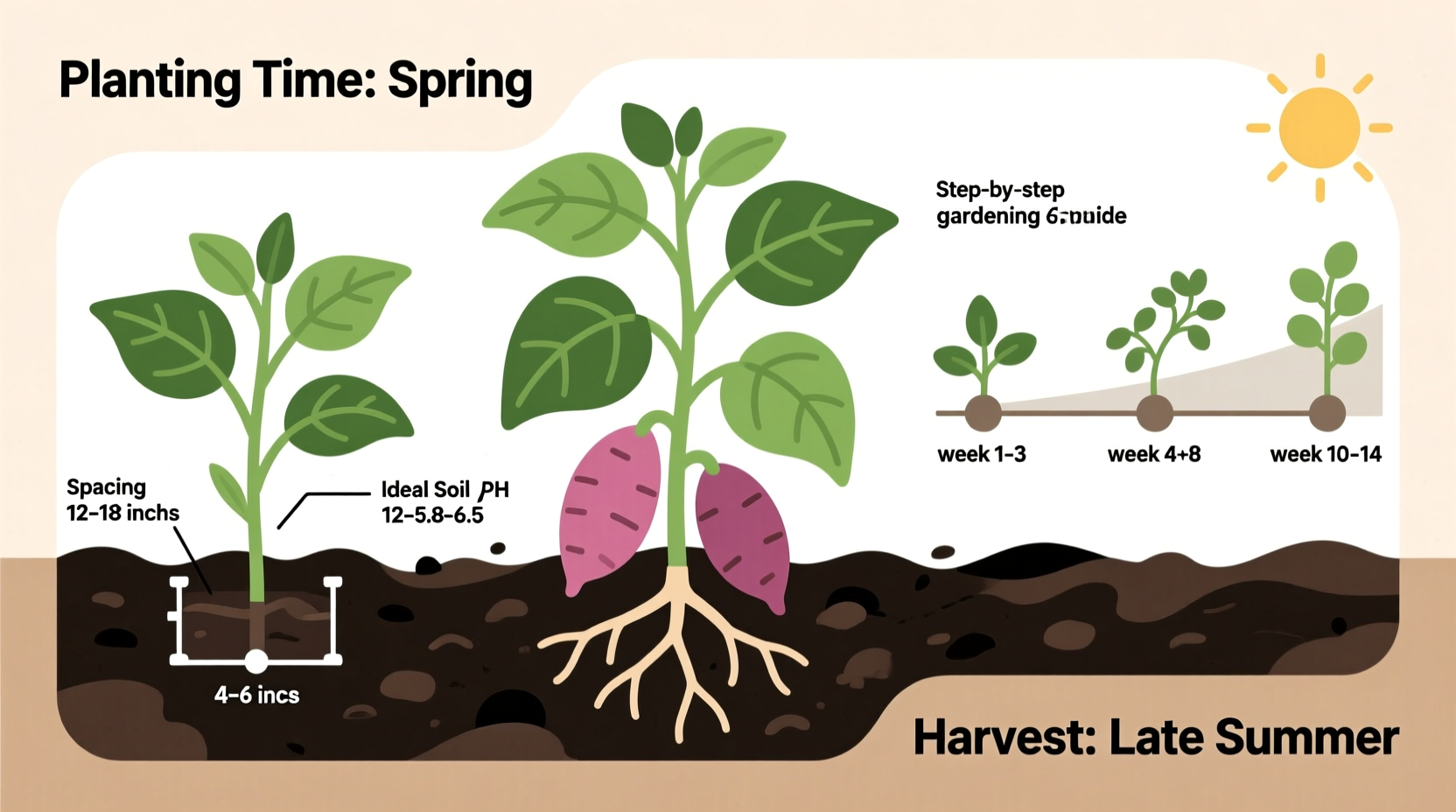Discover how to transform a simple grocery store sweet potato into a thriving garden staple. Whether you're growing for nutritious edible greens or ornamental beauty, this guide delivers proven techniques that work for beginners and experienced gardeners alike. Forget complicated gardening methods—sweet potato vines require minimal equipment and thrive with basic care.
Understanding Sweet Potato Vines: Edible vs. Ornamental
Before starting your sweet potato vine project, clarify your goal. Edible sweet potato vines (Ipomoea batatas) produce both delicious tubers and nutritious leafy greens, while ornamental varieties like Ipomoea batatas 'Margarita' offer vibrant foliage but inedible tubers. For culinary purposes, select traditional orange-fleshed varieties such as 'Beauregard' or 'Georgia Jet' from your local nursery.
| Variety Type | Edible Parts | Growth Characteristics |
|---|---|---|
| Edible Sweet Potato | Tubers and leaves | Vigorous vines, 6-10 ft long, heart-shaped leaves |
| Ornamental Sweet Potato | Leaves only (not recommended for consumption) | Bright purple or chartreuse foliage, more compact growth |
Essential Materials for Success
Gather these simple items before beginning your sweet potato vine journey:
- Organic sweet potatoes (non-treated)
- Glass jars or containers for water propagation
- Toothpicks for suspending potatoes
- Well-draining potting mix (60% soil, 30% compost, 10% sand)
- Containers with drainage holes (minimum 12" deep)
- Watering can with fine spray
Step-by-Step Propagation Process
Creating Sweet Potato Slips (Sprouts)
Begin by generating slips from your sweet potato. The USDA Agricultural Research Service confirms that sweet potatoes require 90-120 frost-free days to mature, making early slip production essential for successful harvests.
- Partially submerge sweet potato in water using toothpicks to hold it in place
- Place container in warm, sunny location (70-85°F ideal)
- Change water every 2-3 days to prevent stagnation
- Wait 2-4 weeks for sprouts (slips) to reach 6-8 inches tall
- Carefully twist slips from potato when roots are 1-2 inches long
Planting Your Sweet Potato Slips
Proper planting technique determines your harvest success. Cornell University's horticulture department recommends planting slips 12-18 inches apart in rows spaced 3-4 feet apart to allow adequate vine development.
- Fill containers with moist potting mix
- Plant slips deep enough to cover all roots and 2 leaf nodes
- Water thoroughly after planting
- Maintain consistent moisture for first week
- Apply 2-inch mulch layer to retain moisture

Optimal Growing Conditions
Sweet potato vines thrive under specific conditions that mimic their tropical origins. The University of Florida Extension confirms ideal soil pH ranges between 5.5-6.5 for maximum nutrient absorption and disease resistance.
Sunlight Requirements
Provide 6-8 hours of direct sunlight daily. While vines tolerate partial shade, full sun exposure produces more vigorous growth and higher yields. Rotate containers weekly for even development when growing indoors.
Watering Schedule
Water when top inch of soil feels dry. Overwatering causes root rot, while underwatering stunts growth. During hot weather, check soil moisture twice daily. Sweet potatoes require consistent moisture during vine establishment but tolerate some drought once established.
Troubleshooting Common Issues
Pest Management
Sweet potato weevils pose the most significant threat to home growers. The USDA identifies these pests by their distinctive red and blue coloring and C-shaped larvae. Prevent infestations by:
- Rotating crops annually
- Removing plant debris after harvest
- Using floating row covers during peak pest season
- Applying neem oil as natural deterrent
Disease Prevention
Fusarium wilt and black rot can devastate sweet potato crops. Prevent these issues by:
- Using disease-free planting material
- Maintaining proper soil pH
- Avoiding overhead watering
- Providing adequate air circulation between plants
Harvesting and Storage
Harvest sweet potato vines when leaves reach 6-8 inches long. For continuous production, pick outer leaves first, allowing the center to keep growing. The optimal harvesting window occurs between 60-90 days after planting slips.
Store freshly harvested leaves in a plastic bag with a damp paper towel in your refrigerator for up to one week. For longer storage, blanch leaves for 2 minutes and freeze in airtight containers.
Maximizing Your Sweet Potato Vine Yield
Extend your harvest season with these professional techniques:
- Pinch growing tips to encourage bushier growth
- Apply balanced organic fertilizer every 4-6 weeks
- Provide trellis support for vertical growth in small spaces
- Take additional cuttings from mature vines for continuous propagation











 浙公网安备
33010002000092号
浙公网安备
33010002000092号 浙B2-20120091-4
浙B2-20120091-4